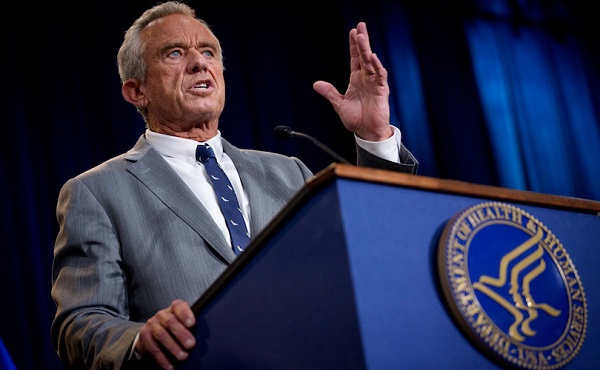Bruce Dowbiggin
The Formidable Superstar, Jim Brown Never Fit Black Or White Stereotypes
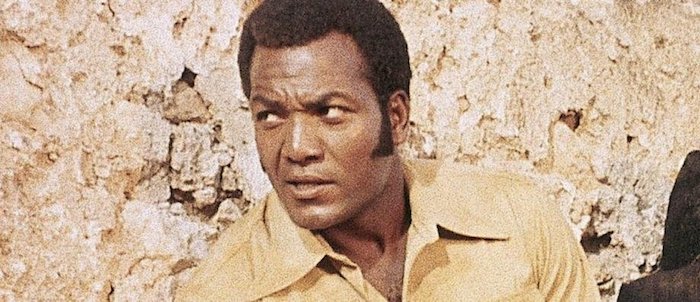
“M***er fuckers be hanging off him. Eight of ‘em be begging Jim, ‘Please, Jim, would you fall down, please? We’re on TV, my kids are watching’.” Richard Pryor on NFL players trying to tackle Jim Brown in the 1960s.
The death at 87 of legendary athlete/ film star/ political activist Jim Brown comes just over three months from the death of hockey icon Bobby Hull. Both were alpha males possessed of adonis figures, the essence of vitality in their time. Brown gave up the NFL to become a film star. He went on to champion causes in the black political movement.
Hull went on to sire a HHoF player Brett Hull and work in the cattle industry. He also traded on his stardom. He is still regarded as one of the five most famous Chicago sports figures of all time, up there with Michael Jordan, Dick Butkus, Gayle Sayers and Ernie Banks.

Neither man was without controversy, however. Brown’s name was frequently associated with domestic violence. According to press reports, “On June 9, 1968, Brown, then 32, was booked on suspicion of assault with intent to commit murder against his girlfriend. The arrest occurred when Brown lived in Los Angeles while working as an actor. The woman, a model, was found semiconscious and moaning on a concrete patio 20 feet below the balcony of Brown’s Hollywood apartment.”
There were other incidents with police involvement, many in fact, but you get the drift. Hull, too, had a nasty legacy of domestic assault stemming from incidents involving his first wife. Neither man spent time in jail for the episodes. Hull made some politically insensitive remarks as well.
But, funny thing. When Hull died the Canadian sports press reports dutifully dredged up all his personal business to rebalance the adulation he received in life. As we reported at the time, some people thought that part of his life defined Hull.
But you had to look very hard into the reports of U.S. sports media on Brown’s death this week to find much about his less-attractive side. The praise for his athletic prowess was effusive. Rightly so. But for the liberal sports press that came of age in the 1960s, it was too much to taint Brown’s political legacy by showing his less-flattering past. So they almost universally gave it a pass. In one interview, Bob Costas, the liberal’s liberal in the press box, skirted the issue to dwell on his boyhood memories of Brown.
Wonder why? Those news sources that dared mention it— the New York Times— were lambasted for sullying his reputation with the facts. “It’s the New York Times vs. ESPN for scumbag of the week” is a sampling of the pushback from the sports world.

While playing at Syracuse, Brown was perhaps the greatest lacrosse player in American history before going on to football fame with the Cleveland Browns of the NFL. We can still remember, as Richard Pryor did, the sight of No. 32 dragging defenders along behind him as he set rushing and TD records in a 12-game season— records that are still mostly unassailable. He’s a Top Five NFL player all-time. Colts HOF tight end John Mackey summed up Brown’s style. “He told me, ‘Make sure when anyone tackles you he remembers how much it hurts’.” They did. Vividly.
We can also recall the shocking news that Brown was ditching football in 1966 after nine NFL seasons to star in a Hollywood epic, The Dirty Dozen, with Lee Marvin, John Cassavetes and Donald Sutherland. (He intended to return to the Browns but when they wouldn’t let him miss training camp he retired.) How would he do? We rushed to see the film. Brown was just fine, dragging his fellow cast members after him like NFL players as he took on the Nazis.

He went on to star in 100 Rifles as Hollywood’s first black action star. Other movies followed. When the glamour of films lost its lustre Brown became an icon for the black political movement. He supported Muhammad Ali in his fight to avoid prison for refusing to serve in Viet Nam. He created camps and schools for black children and was a recurring figure at the seminal moments for black empowerment.
But his philosophy was not today’s Marxist #BLM brand. “We’ve got to get off the emotional stuff and do something that will bring about real change,” he said. “We’ve got to have industries and commercial enterprises and build our own sustaining economic base. Then we can face white folks man-to-man and we can deal.” He was not easily intimidated.

In 2018, Brown and Kanye West met with President Donald Trump to discuss the state of America. Criticized by the black community for the meeting, Brown said, ”we can’t ignore that seat and just call names of the person that’s sitting in it”. Brown called Trump “accessible”, and said that the president was not a racist. The Brown obits in liberal media buried those quotes deep in stories.
Still he scared some folks. Files declassified in 2003 showed that the FBI, the U.S. Secret Service and several police departments had monitored Brown and the Black Economic Union, attempting to smear the group as a source of Communist and radical Muslim extremism. Hillary Clinton would have been proud.
Brown himself was into unapologetic self-improvement as he showed when he went to Pryor’s hospital room after the comedian set himself alight while freebasing. While others soft pedalled their advice Brown made it clear that Pryor had to kick drugs, and that he would help him do so. (As thanks, Pryor later screwed Brown in a film deal that would have brought him millions.)
Brown was unrepentant when confronted about his past. “I’m no angel,” he told The (Cleveland) Plain Dealer in 1970. Regarding the assault allegations, he said, “I’ve never been convicted. I’ve just been harassed. I’ve been hit so much I don’t sting any more… I take it and look my accuser in the eye. I don’t look at my shoes when I talk to anybody. I know what I am. I only have to live with myself.”
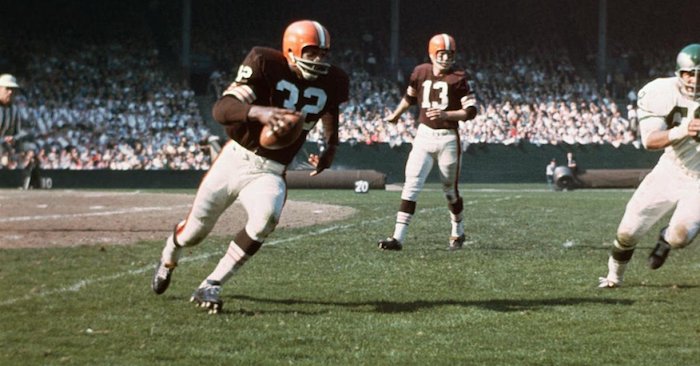
That he did. The biggest difference between him and Hull was that the critics of the Golden Jet wanted to get tawdry clicks from his life story. With Brown they wanted him to advertise their Woke selves. That’s a huge and crucial difference in this insane world.
Sign up today for Not The Public Broadcaster newsletters. Hot takes/ cool slants on sports and current affairs. Have the latest columns delivered to your mail box. Tell your friends to join, too. Always provocative, always independent. https://share.hsforms.com/16edbhhC3TTKg6jAaRyP7rActsj5
Bruce Dowbiggin @dowbboy is the editor of Not The Public Broadcaster A two-time winner of the Gemini Award as Canada’s top television sports broadcaster, he’s a regular contributor to Sirius XM Canada Talks Ch. 167. Inexact Science: The Six Most Compelling Draft Years In NHL History, his new book with his son Evan, was voted the seventh-best professional hockey book of all time by bookauthority.org . His 2004 book Money Players was voted sixth best on the same list, and is available via http://brucedowbigginbooks.ca/book-personalaccount.aspx
Bruce Dowbiggin
WOKE NBA Stars Seems Natural For CDN Advertisers. Why Won’t They Bite?
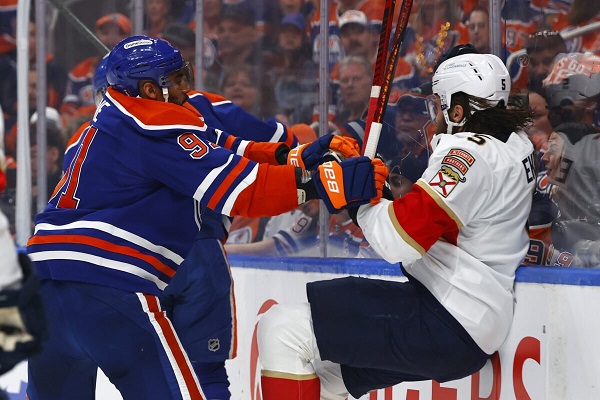
The wonderful people who brought you Elbows Up and Don’t Shop At Home Depot! are now on to Edmonton Oilers Bring Home The Cup. In response to no Canadian-based team winning the Stanley Cup since 1993 the corporate nostalgia folks are linking arms with Connor McDavid & Co in their struggle with the dastardly Florida Panthers. The Oil are now Canada’s team!
In one bit they were taking ice shavings from McDavid’s home rink in southern Ontario to mix with the frozen Zamboni water of Edmonton’s Rogers Place arena. Okay, they have eight players on the Oilers roster who aren’t Canadian (hello Leon Draisaitl), and the stars now killing it for the Panthers, Sam Bennett and Brad Marchand, are from Ontario. But never mind. Like playing Mr. Dressup trivia with Mike Meyers it’s just too good an idea to waste.
The outcome of all this patriotic wind therapy will be determined Tuesday— or Thursday at the latest. But it will have achieved the desired goal of warming the cockles of all those Canadians who turtled in the election, flipping back to Mark Carney’s Liberals when the going got a little rough with Donald Trump. Resulting in a maximum four more years of Carney’s faculty lounge of dunces and Kamala Harris clones.
While the marketers were playing the Maple Syrup March over the Stanley Cup Final they missed an even better opportunity to marry Canadian patriotism with sport. We speak, of course, of the inevitable crowning of Canadian stars as champions of the NBA. In fact the entire progress of the postseason in the sneaker league has witnessed great Canadian results.
Not least of which: Hamilton’s Shai Gilgeous Alexander winning the NBA MVP while leading his Oklahoma City Thunder to the brink of the NBA crown. For those distracted by Stu Skinner and Corey Perry, SGA is a revelation, If you missed him leading Canada back to the Olympics last year the wiry 26-year-old is a lithe, unstoppable chinook who routinely scores 30 points a game.

He has help from another Canadian, Montreal’s Lu Dort, a finalist for NBA defensive player of the year, who also led Canada to the Olympics. As unstoppable as SGA is, Dort is immovable. But that’s not all the Canadian content. In the Finals they are up against two more Canadian teammates from last year. Aurora Ont.’s Andrew Nembhard is the back-court catalyst for Tyrese Haliburton’s Indian Pacers, taking them to the Eastern title and within two wins of the NBA title. He’s assisted by another Canadian, Montreal’s Benedict Mathurin, the hero of the Game 3 win for the Pacers. They’re now household names.

The Canadian content didn’t end there, either. In the semifinals, the Thunder beat the Minnesota Timberwolves featuring SGA’s cousin Nickeil Alexander-Walker , another alumnus of the CDN national team. At one point the two close friends were anything but friendly, shoving each other under the basket.
They had Canadian company in the postseason. In earlier rounds R.J. Barrett and the New York Knicks made it to the second round in the East, Jamal Murray’s Denver Nuggets fell to the Thunder in Round Two, while the Houston Rockets and Mississauga’s Dillon Brooks, a tenacious physical presence, lost to Steph Curry’s Golden State Warriors . Meanwhile, Corey Joseph’s Orlando Magic lost in the first round to Boston.
But the Canadian content didn’t end there. The Toronto Raptors, NBA champs of 2019, are now spread throughout the league, affording nostalgic Canadian fans a rooting playoff interest in players such as Pascal Siakim, who’s pairing with Nembhard and Mathurin to push the upset-minded Pacers, shooting guard OG Anunoby teamed with small forward R.J. Barrett on the Knicks and point guard Fred Van Vliet of the Rockets. All harkened back to the Raptors’ greatest days.
But in the heat of Elbows Up marketing these great performances don’t seem to get a sniff from marketers looking to promote Canadian unity in these fractious days. While the sports networks give airtime to the stories in the Association. the general public and advertisers have little time or inclination to draw patriotic strength from these young men.
Before we completely condemn Canadian marketers it should be noted that the interest in the NBA in general is waning. The NBA has lost 75 percent of its TV audience since the Michael Jordan peak while many other sports — NFL, men’s & women’s college basketball, college football — have set record TV ratings. Yes, TV ratings in many fields have dropped since the 1990s. Still, it seems significant.
The problem for the NBA in a Time of Trump is its embrace of hard-left politics. Whether it’s LeBron James defending Chinese shoe manufacturers, the slavish devotion to #BLM even as its corruption is revealed and a maniacal obsession with Donald Trump (and embrace of Kamala Harris) the NBA has made its bed with radical political and cultural elements. It’s as if the Trump election and cultural shift never happened.
In this wilful blindness they are supported by their media partners whose own credibility is at an all-time low after carrying water for the Biden farce and Kamala’s erasure. Ironically, this is the same political crash car running Canadian politics at the moment. You’d think that would make the NBA— and its sister Women’s NBA—like catnip to the Canada Not For Sale crew.
So far the hockey quest is foremost in their minds. But perhaps when SGA holds the Larry O’Brien Trophy they might just achieve the symbiosis that the sport has always coveted.
Bruce Dowbiggin @dowbboy is the editor of Not The Public Broadcaster A two-time winner of the Gemini Award as Canada’s top television sports broadcaster, his new book Deal With It: The Trades That Stunned The NHL And Changed hockey is now available on Amazon. Inexact Science: The Six Most Compelling Draft Years In NHL History, his previous book with his son Evan, was voted the seventh-best professional hockey book of all time by bookauthority.org . His 2004 book Money Players was voted sixth best on the same list, and is available via brucedowbigginbooks.ca.
Bruce Dowbiggin
Canadians Thinks America Owes Them. Trump Has Other Ideas
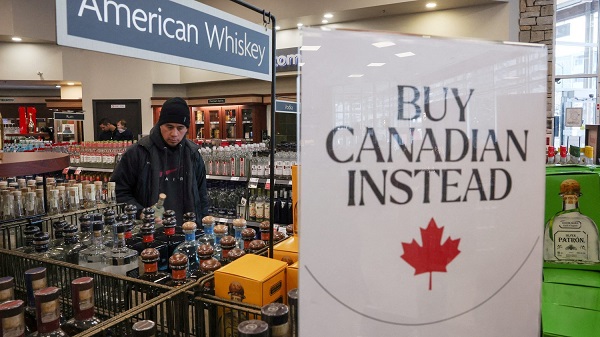
Breaking: It’s now being reported that in the 2024 U.S. election, zero Canadians voted for Donald Trump. In fact, zero Canadians voted for anyone on the ballot. They’re not allowed to. And yet rage monkeys in the Canadian media seem to have the idea that Canada is— and should be— an immediate priority of POTUS 47.
Here’s Globe & Mail/ CBC wind therapist Andrew Coyne about ten exits past normal on the idea of Donald Trump on Canadian soil. Okay, on Alberta soil. “We’re going to roll out the red carpet for the wannabe dictator of America at the very moment he is moving to suppress dissent with armed force?” (You mean like the Truckers Convoy?)
Cartoonist Michael DeAdder, who likely cries if you use improper pronouns, says “Hold my kombucha”. His latest etching has Trump asking a veteran what he did in the war. The witty retort is “Fought against people like you”. Get it? Trump murders six millions Jews. But The Hill keeps this guy working, and the laughs just keep on coming. Free speech!

The presumption is jaw-dropping. Even as Trump’s approval rating hits 53 percent, Canadians online were echoing Democrats’ fever dreams of forming a shadow government to take over from Trump via coup. This sense of impunity at a distance is why the Canadian government— along with other drive-by virtue signallers UK, Norway, New Zealand, and Australia— have imposed sanctions on two sitting members of the Israeli cabinet. They know it will rile Trump’s America.
For ordinary Canadians, Trump became a post-it note to justify giving Team Liberal another swing at ruining the nation. “We used to be such friends! He’s a tyrant.!” This just in: Love him or hate him Trump is employed by Americans to do their bidding. He’s not a sentimental buddy of Canada who’ll cut us some slack for old time’s sake. He has no remittance from Canada to please the Laurentian elites. If your defence is non-existent and your military gender-obsessed: you had it coming.
Are his policies jostling Canada? Absolutely. Read Art of the Deal. The 51st state jibe when Justin soiled himself was rude. But it worked on pliant Canadian liberals. Now the The Little Banker is disavowing the dissolute decade of Trudeau while employing Conservatives’ policies on defence spending, inter-provincial trade and border security. Hell, he’s naming longtime Tories to his personal staff.

In the end Carney knows this ain’t mock Parliament. That his dossier begins and ends with satisfying the beast to the south. None of this should be a surprise. Yet Canadians dozed when Trump made clear in his election campaign that the American economy is the greatest in the world. If you want to fish in that pond it’s not going to be for free. That means tariffs for a range of U.S. industries that couldn’t compete in a Biden world.
We can argue how well tariffs work, but Trump wants them to reduce taxes on the people who elected him. Not the Canadians who fly first class but pay economy. And who have pushed his approval ratings into the 50s, higher than ever before. (Likely to spike higher after the No Kings Riot season peters out.)
No wonder Canadians preferred the guy before Trump, the senile sock puppet whose government was run by anonymous figures using the auto-pen. Sleepy Joe let Canada slide into mediocrity and financial peril without any judgement. It was comfortable. Then The Donald had the nerve to expose the ditch Canada was in.
Canada, Trump pointed out, was delinquent on its defence, harbouring Chinese drug lords, printing money like Canadian Tire and its banks were involved in money laundering. That was the nice stuff. Try Organized fentanyl networks operating with impunity in the largest cities of the nation So dumping on Trump in salty cartoons allows Canada’s Mod Squad to ignore the real issues that should have been litigated in the April election.
We have written extensively about the ruse that was played on gormless Canadians in “U.S. Voters Smelled A Rat But Canadian Voters Bought The Cheese” We have catalogued Canada’s drug and money laundering disgrace in “Chinese Gangs Dominate Canada: Why Will Voters Give Liberals Another Term?” We’ve described the real-estate bubble economy created by Trudeau and sidekick Carney that threatens to crash the economy and ruin seniors’ pensions in
In the end, it is still la-la-la-la We Can’t Hear You. Trump-obsessed Boomers more concerned with the equity in their jumped-up bungalows gave the finger to the next generations and blamed it all on Orange Man Bad. In the monotone of Canadian political comment it all seemed so easy. Turn against Trump. Cash another dividend. Cheer on MSNBC and CNN bitch sessions.
The Family Compact don’t get it. Their Antifa heroes down south plan demos and “nonviolent” activity to crater the public resolve. In Canada that still works. But in the U.S. the Covid reverb is hitting the natural governing class of the nation. While they craft fine phrases about democracy the consumers remember them using a virus to stop society.
The appetite for Gavin Newsom blovaitors and Jen Psaki fart catchers is crashing in America. Riots may be coming in the U.S., but it won’t be like George Floyd and Covid and the pussy hats. At some point Canada’s docile classes better wake up, too. America owes them nothing. They need to earn the respect.
Bruce Dowbiggin @dowbboy is the editor of Not The Public Broadcaster A two-time winner of the Gemini Award as Canada’s top television sports broadcaster, his new book Deal With It: The Trades That Stunned The NHL And Changed hockey is now available on Amazon. Inexact Science: The Six Most Compelling Draft Years In NHL History, his previous book with his son Evan, was voted the seventh-best professional hockey book of all time by bookauthority.org . His 2004 book Money Players was voted sixth best on the same list, and is available via brucedowbigginbooks.ca.
-

 Business2 days ago
Business2 days agoEU investigates major pornographic site over failure to protect children
-
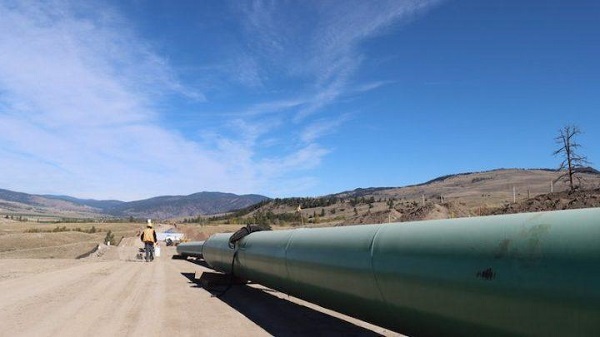
 Canadian Energy Centre2 days ago
Canadian Energy Centre2 days agoCross-Canada economic benefits of the proposed Northern Gateway Pipeline project
-
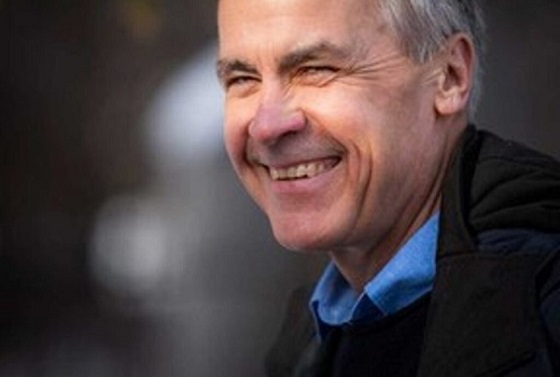
 Economy2 days ago
Economy2 days agoCarney’s Promise of Expediting Resource Projects Feels Like a Modern Version of the Wicked Stepmother from Disney’s Cinderella
-
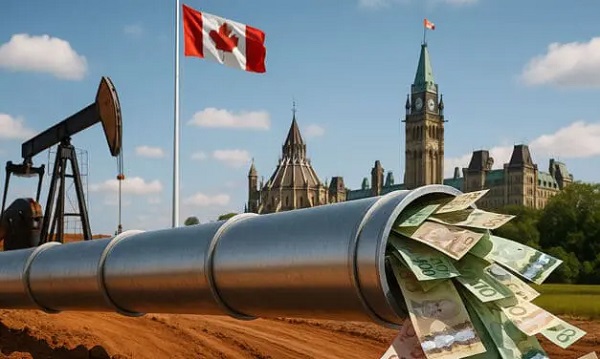
 Alberta2 days ago
Alberta2 days agoAlbertans need clarity on prime minister’s incoherent energy policy
-

 conflict16 hours ago
conflict16 hours ago“Evacuate”: Netanyahu Warns Tehran as Israel Expands Strikes on Iran’s Military Command
-

 Energy15 hours ago
Energy15 hours agoCould the G7 Summit in Alberta be a historic moment for Canadian energy?
-
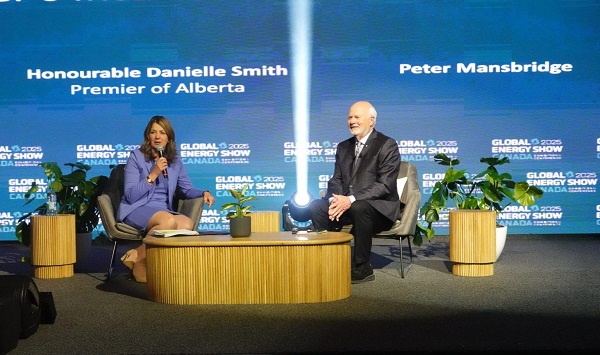
 Alberta1 day ago
Alberta1 day agoAlberta’s grand bargain with Canada includes a new pipeline to Prince Rupert
-

 Health19 hours ago
Health19 hours agoLast day and last chance to win this dream home! Support the 2025 Red Deer Hospital Lottery before midnight!






